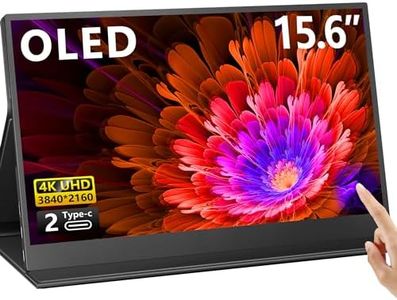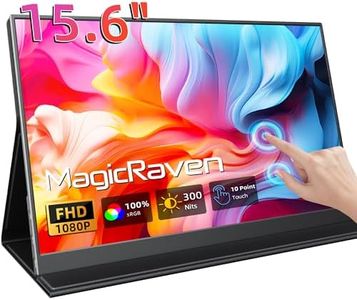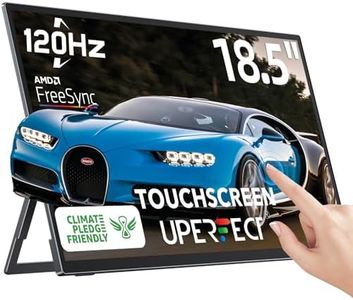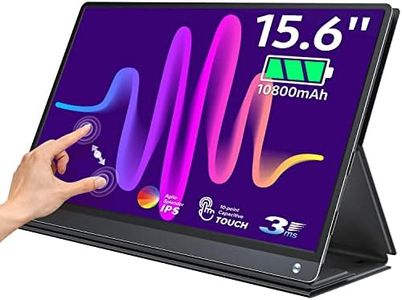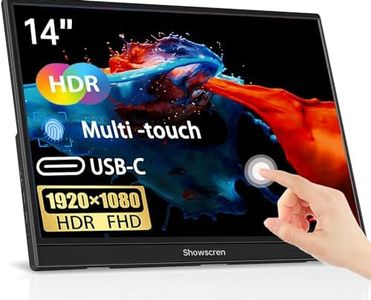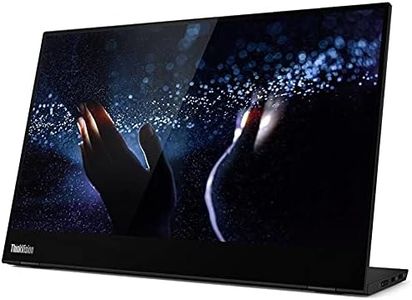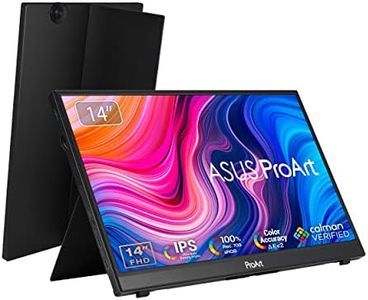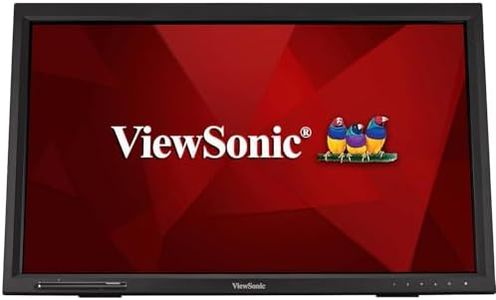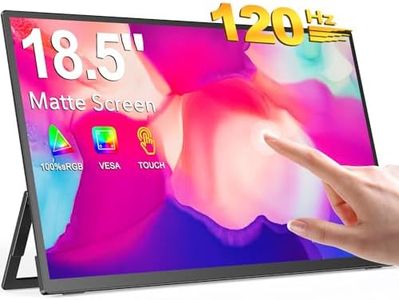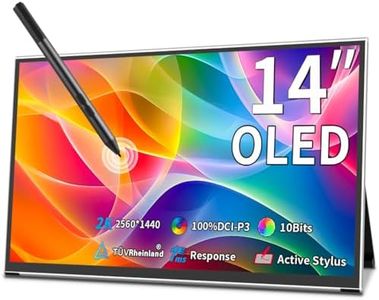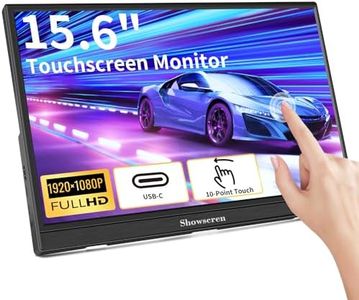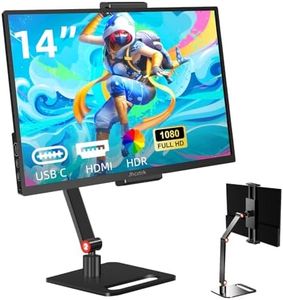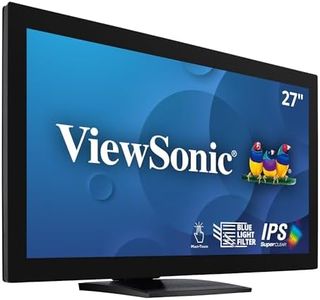We Use CookiesWe use cookies to enhance the security, performance,
functionality and for analytical and promotional activities. By continuing to browse this site you
are agreeing to our privacy policy
10 Best Touchscreen Monitors
From leading brands and best sellers available on the web.Buying Guide for the Best Touchscreen Monitors
When choosing a touchscreen monitor, it's important to think about how you plan to use it, where it will sit in your space, and what features will make your experience the best. Since these monitors come in a wide range of sizes, resolutions, and touch technologies, understanding your needs will help you make a smart choice. Ask yourself whether you need it for regular desktop work, creative projects, presentations, or perhaps as part of a public kiosk. Each use case might require different capabilities. Let your intended use guide you as you weigh the most important specs below.Screen SizeScreen size tells you how big the display area is, measured diagonally in inches. This is important because a larger screen makes it easier to view more content or interact with multiple windows, while a smaller screen can save space and may be more portable. Screens generally range from under 12 inches (compact, good for tight spaces), 15-24 inches (typical for most workplaces and home use), to 27 inches or larger (great for immersive work or creative tasks). If you plan to do detailed work or want room to multitask, go for a bigger size. For occasional use or to fit in a small space, a smaller one might suit you best.
ResolutionResolution is the number of pixels displayed on the screen and affects image sharpness and clarity. Common values include HD (1366x768 or 1920x1080), QHD, and 4K. Higher resolution is better for tasks that require detailed visuals, like graphic design or editing photos. If all you need is basic touch interaction or presentations, Full HD (1920x1080) is usually sufficient. For sharper images, especially on larger screens, consider QHD or higher. Choose the resolution that matches what you view the most—text, videos, games, or creative projects.
Touch TechnologyTouch technology decides how the screen senses your touch. The main types are resistive (responds to pressure), capacitive (responds to the electrical properties of your finger), infrared, and optical. Capacitive is the most common for modern monitors and gives a more responsive, smooth experience that supports gestures like pinch-to-zoom. Resistive is more durable against scratches and can be used with gloves or styluses but may feel less responsive. If you need to use gloves or want extra durability, resistive might be best; for fluid and quick touch actions, capacitive is usually the preferred choice.
Number of Touch PointsThis spec shows how many fingers or touches the screen can track at the same time. Basic screens may offer single- or dual-touch, while advanced models might support up to 10 touch points or more. This matters for gestures (like zooming or rotating) and for situations where several users interact at once (like in group settings or education). For solo use, two or more touch points are fine; for collaboration or creative apps that use gestures, go for higher multi-touch screens.
Connectivity OptionsConnectivity covers which ports are available to hook up the monitor to other devices. Common options are HDMI, DisplayPort, USB (for touch data), and sometimes VGA or audio out. Make sure the monitor has ports that match your computer or system. If you have modern devices or want multiple monitor setups, look for DisplayPort or HDMI. For easy compatibility, verify that your chosen monitor’s ports fit what you have. This helps ensure plug-and-play ease without needing extra adapters.
Display Panel TypePanel type refers to the underlying technology that creates the image. The main types are IPS (good colors and wide viewing angles), TN (fast response, lower cost, narrower viewing angles), and VA (better contrast, sometimes slower response). IPS panels are best for accurate color and viewing from different angles—great for creative work. TN panels are fine for fast tasks or basic interactions but may not look as good from the side. Pick the one that meets your viewing quality needs.
Adjustability and MountingThis refers to how easy it is to tilt, swivel, or adjust the monitor’s height, and whether it can be mounted on a wall or arm. Adjustable stands boost comfort and ergonomics, especially if you’ll use the touch function a lot or share the monitor with others. If the monitor is for a public space or needs to be fixed securely, look for VESA mount compatibility. For day-to-day flexibility, an adjustable stand is valuable.
